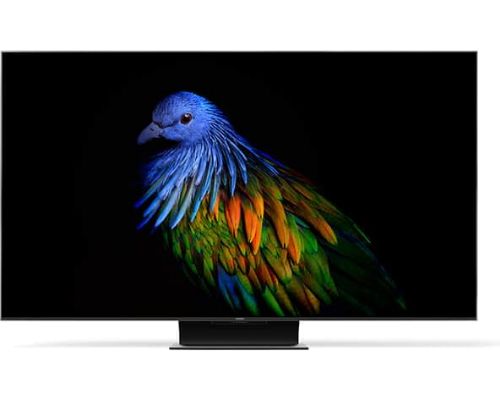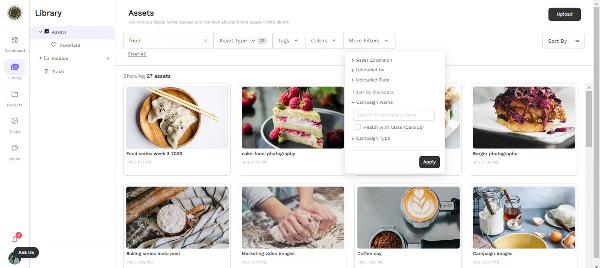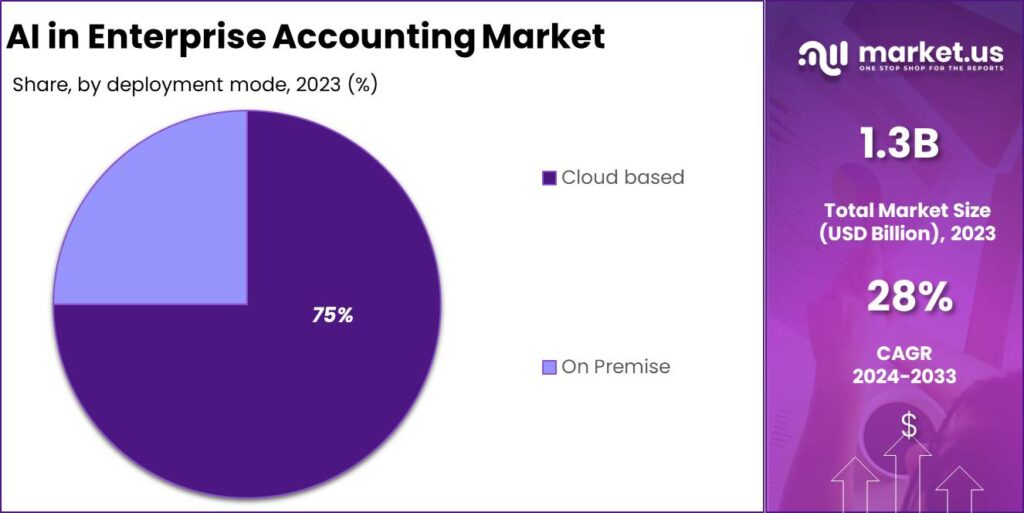5 strategies to amplify your Twitter engagement
While having thousands of Twitter (rebranded as 'X') followers is great, those numbers don't mean much if those followers don’t engage with your Tweets. That’s akin to having something important to say but being unable to get people to listen to you. So even though the platform has a huge potential to drive brand visibility and growth, you may be unable to make full use of it if you can’t drive Twitter engagement.
In this post, we help you uncover some of the top strategies to bring up those social media engagement numbers and engage your Twitter audience more effectively. Let’s dive right in.
What is Twitter engagement and why does it matter?
Twitter engagement refers to all the ways people interact with your brand and its posts on the platform. So it not only includes likes, Retweets and replies but also brand mentions (tagged or not), follows, embedded media and links, just to name a few. In other words, it’s an indicator of how popular your brand is on the platform.
At this point, you may have started to get a fair idea of why Twitter engagement is so important. But let’s break it down and try to understand the specifics of why you should work on engaging your Twitter audience:
1. Massive audience base
The main appeal of Twitter is its massive audience base. With 330 million monthly active users recorded in 2019, it’s one of the biggest social media platforms and makes a significant contribution to brand visibility and growth. So you can imagine how the level of engagement you get on Twitter makes such a huge difference for your brand.
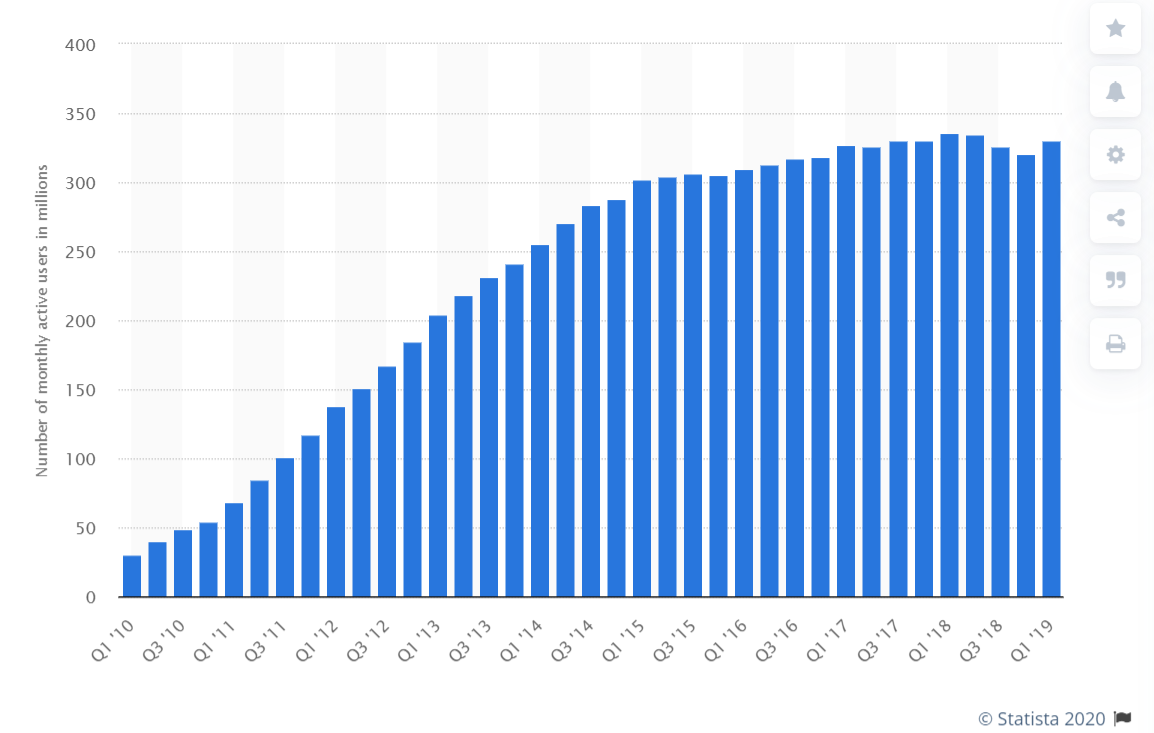
2. Builds exposure
Twitter allows users to quickly Retweet posts in just a few clicks, which could further promote sharing. And due to the Twitter algorithm, when people share your Tweets, it could help build exposure within their followers’ feeds.
Some likes and replies will show up in a person's followers' feeds, as you can see in the example below. A user liked Steak-umm's Tweet, and that same Tweet appeared in her followers' feed signifying that she liked it.

The best part is that this exposure doesn’t just end within the Twitterverse. With people often sharing screenshots of Tweets and conversations on other platforms or turning them into memes, you could potentially expand your reach even further. In fact, an estimated 1.6 billion unique visitors each month see Tweets through third-party platforms.
3. Boosts brand-consumer connection
With fewer privacy restrictions, Twitter allows brands to quickly discover and respond to Tweets concerning them. This allows you to connect with customers directly while resolving any complaints or issues at the earliest.
And when you engage with your audience this way, you get to strengthen your relationship with them. In fact, the Sprout Social #BrandsGetReal study found that liking or responding to a customer is the top social media behavior that can help brands connect with consumers.
4. Promotes openness
In line with the previous point, fewer restrictions also promotes transparency and openness between brands and consumers. Because interactions with customers through Tweets and replies is open for everyone else to see, it could quickly reach a large community.
How to measure engagement on Twitter
Now that you understand just how crucial Twitter engagement is, you're probably curious where your current engagement rate stands. Keep in mind that your total engagements don’t translate directly to engagement rate on Twitter. You have to consider your following size too.
You may have hundreds of followers, but if only a small percentage of those followers like or Retweet your Tweets, your engagement rate needs improvement. Besides likes, Retweets and replies, you may also want to consider less typical actions like branded hashtag use, follows and linkbacks as engagement actions.
With so many factors to consider, it can be challenging to manually calculate your average Twitter engagement rate. And the native Twitter analytics won’t break it down for you either. So consider investing in a Twitter analytics tool to get a more accurate picture of your engagement and measure other performance metrics on the platform.
The Twitter analytics and reporting tool from Sprout lets you do just that. Your Twitter Reports dashboard will give you an in-depth look at your organic impressions, total engagements and link clicks. It also helps you track other metrics such as your net follower growth to gain a more comprehensive view of your Twitter performance.
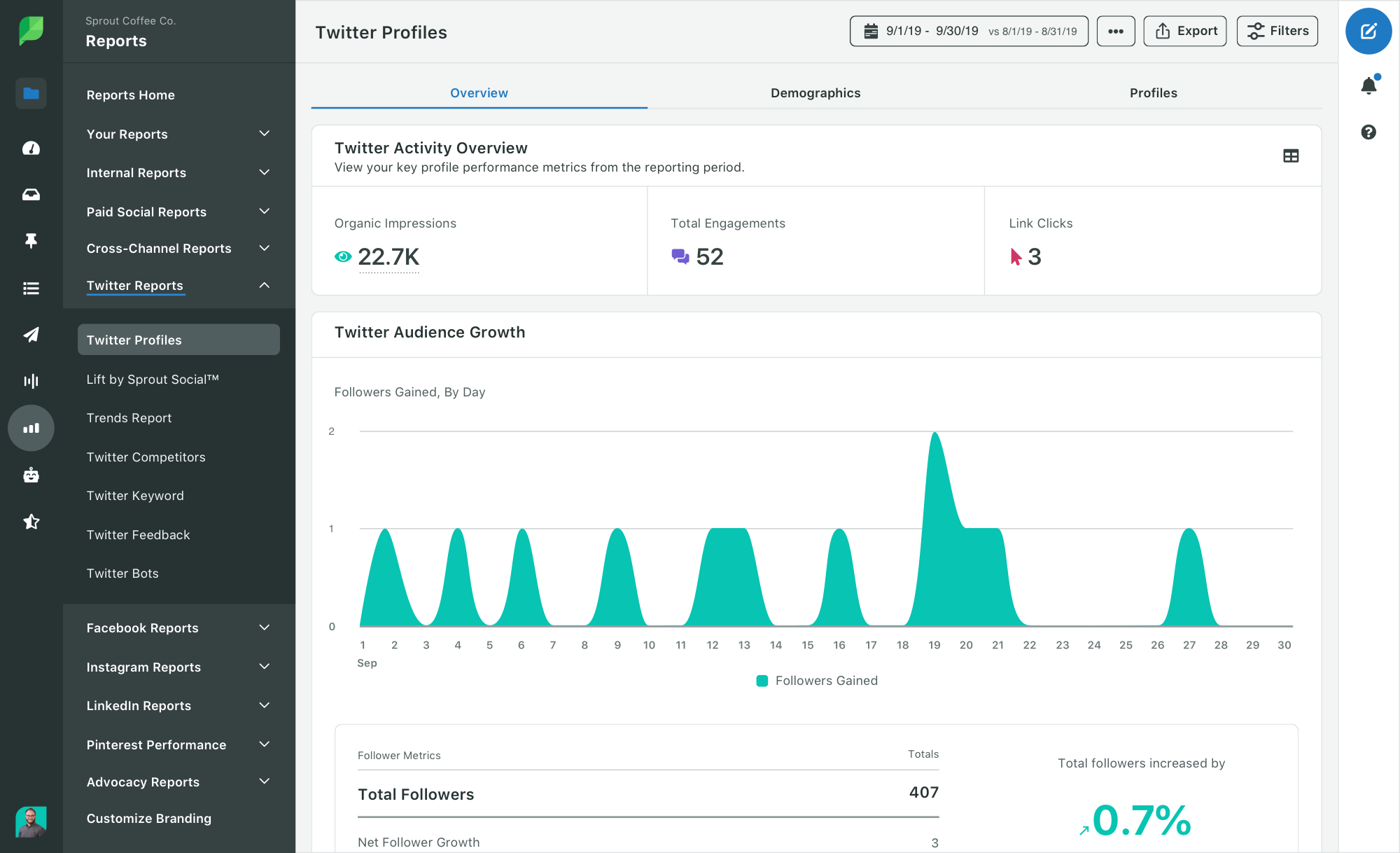
5 ways to boost Twitter engagement
Once you start keeping a close eye on your Twitter engagement rate, you might notice a huge disparity between your following size and your engagements. That’s likely because you haven’t yet started making an active effort to boost your Twitter engagement. So check out these five strategies to get those numbers up:
1. Catch your audience at the right time
Timing is one of the most crucial factors that influence how well your Tweet performs or how many people engage with your Tweets. That’s because the platform sees around 350,000 Tweets on average every day. So it's important to get your Tweet out at a time when people are highly active for a better chance of visibility.
At Sprout, we analyzed 20,000+ pieces of content from our customers to see how engagement changes by timing. Based on our findings, the best times to post on Twitter are around mid-mornings and mostly weekdays (Central Time). Of course, this might vary based on factors like location and industry. So test different timings for your Tweets to see what works best.
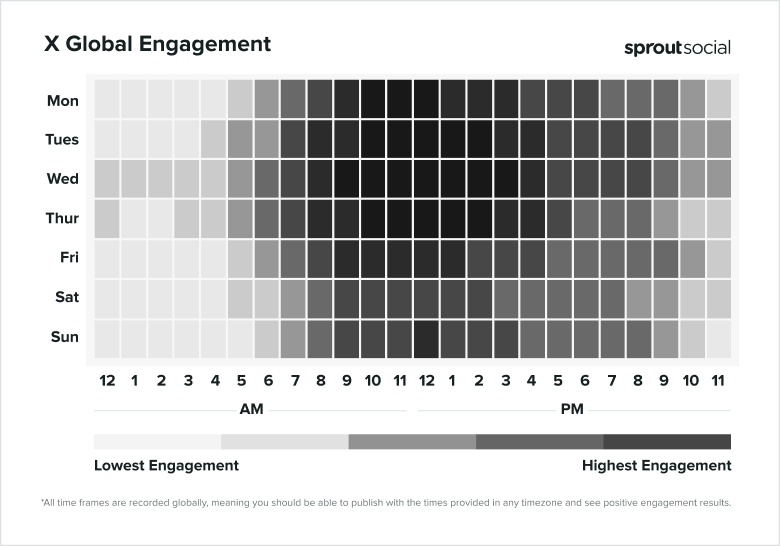
2. Make the most of visual elements
Any regular Twitter user knows just how much a photo or video stands out on the platform amid all the text Tweets. On mobile, in particular, a Tweet with a visual element takes up at least half the screen. And the more visible your Tweet is, the more likely it is to engage your audience. In fact, if your Tweets include a GIF, those Tweets get 55% more engagement than those without.
So it’s crucial that you use visual elements if you want to boost your Twitter engagement. You could post original graphics to share useful information and updates, photos of your team, videos demonstrating how to use your product, tasteful memes relevant to your industry and more. Even if you have to share a link, make sure you include a thumbnail or attach a relevant picture.
Check out this Tweet from Evernote, for instance. The team could’ve easily just posted the text with the link to their productivity playlist. Instead, they included a photo of a cassette labeled “productivity jam.” This not only catches the eye instantly but is highly relevant to the link. Plus, it’s consistent with the brand’s green and white color scheme.
Start your week at the right tempo.
Here are our favorite songs to get in the zone.🎶: https://t.co/tlYa1dqgLV pic.twitter.com/n6lgZtvZVt
— Evernote (@evernote) April 6, 2020



